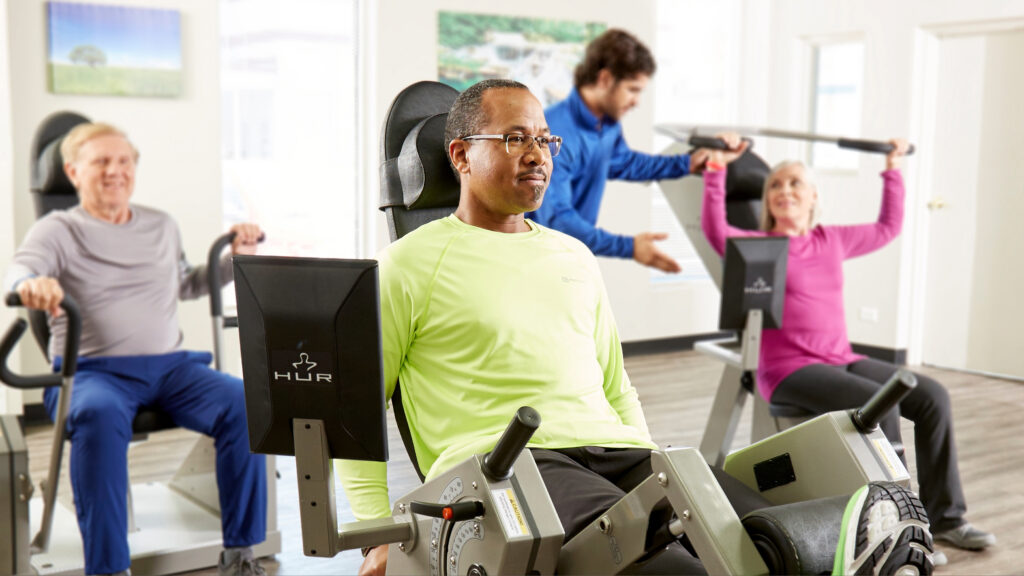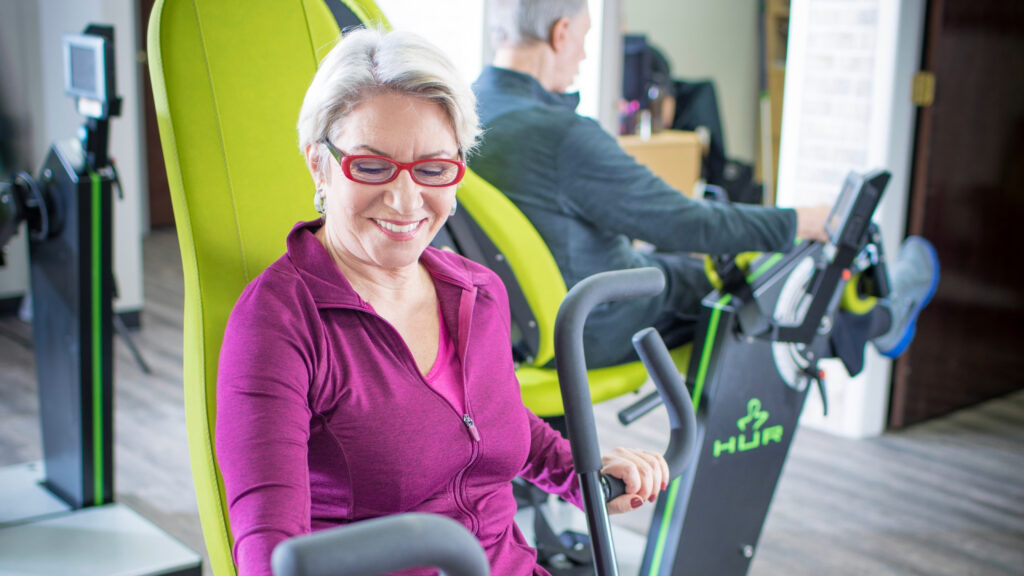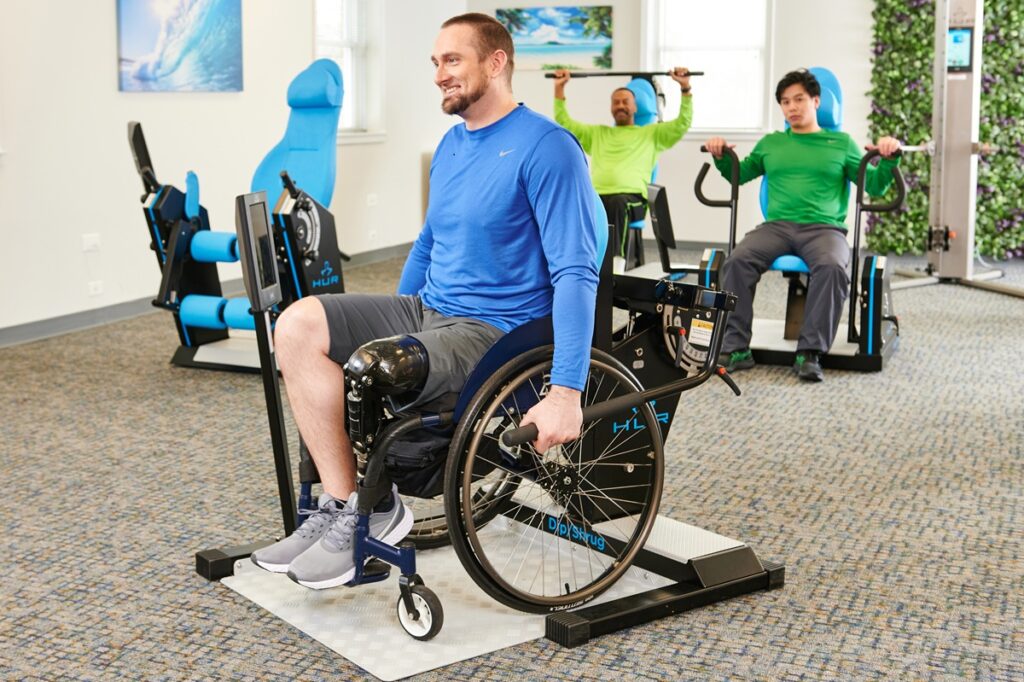Dr. Winningham received his Ph.D. in Neuroscience from Baylor University and has 25 years of experience researching human memory and has largely focused on older adults and ways to enhance their mental functioning and quality of life. He creates brain stimulation activities that have been used in thousands of retirement communities and rehabilitation facilities including Dr. Rob’s Cognitive Connections with Masterpiece Living. He has trained thousands of professionals to offer high-quality cognitive rehabilitation and therapy programs.
The following information was derived from this very important presentation.
The Link Between Wellness and Dollars for Senior Living Communities
There is a tremendous amount of new research focused on understanding the connection between physical exercise and cognitive health - especially the connection between physical exercise, cognitive ability as we age, and our chances of developing dementia. Researchers are also interested in the connection between cognitive health and social engagement, meditation, stress, and nutrition. But, the vast majority of recent cognitive health research is focused on the connection to physical exercise.
Why? A panel of experts brought together by The National Institute of Health recently explained: Researchers are most confident that physical exercise has the greatest impact on reducing the chance of developing dementia.
“50% of your chance of developing dementia is genetic, which means that 50% is within our control.”
— Dr. Winningham
Understanding the Connection Between Physical Exercise and Executive Functioning
The term Executive Functioning includes attention, cognitive inhibition (controlling distractibility), behavioral (or response) inhibition, problem-solving, reasoning, planning, and working (short-term) memory. And, an overwhelming amount of research shows that physical exercise can improve executive functioning in older adults through early-stage dementia.
In 2003, a study from the University of Illinois conducted a meta-analysis and concluded that, without a doubt, physical exercise significantly improves cognition. Amongst other things, the researchers found that several variables are related to the amount of improvement associated with exercise, including:
- Age. The older we are past middle adulthood, the more cognitive benefit we derive from physical exercise.
- Gender. For some reason, females derive a slightly greater cognitive benefit from physical exercise than males.
- Type of exercise. Aerobic exercise PLUS strength (resistance) training has the greatest effect. Aerobic exercise and strength training releases different growth hormones in the brain and central nervous system, both of which lead to an improvement in executive functioning.
- Length of time. Not surprisingly, the longer people exercise the stronger the improvement in cognitive health.
This paper has led to a whole new generation of research focused on understanding the connection that exercise has to each of the above variables, AND understanding whether different types of exercise have a greater impact on cognitive health. So far, the types of exercise that have been shown to have the greatest impact are:
- Aerobic training
- Strength training
- Yoga
- Tai Chi
- High-Intensity Interval Training (HIIT)
- Dual Tasking
Aerobic and Strength (Resistance) Training and Cognitive Health
Study after study has found that a mixture of aerobic and strength training is the most effective recipe for improving cognitive ability. A 2010 study by Liu-Ambrose found an 11% cognitive improvement in participants who trained once a week and a 13% improvement in participants who trained twice a week.
“If you’re working with older adults, trying to motivate them, tell them about these benefits, which can be very motivating. Talk with them about how executive functioning can help them reach a personal goal. For example, if someone tells you they are concerned about falling, connect resistance training to the goal of not falling. If they are concerned about memory and remaining independent, connect that to how resistance training and aerobic exercise can support that goal. Executive Functioning is related to almost everything we do in life, so it’s easy to tie individual goals back to how resistance training supports executive functioning which supports that goal.”
~ Dr. Winningham
Another study in 2012, found that twice a week resistance training in 70 to 80-year-olds with Mild Cognitive Impairment, led to significant improvement in attention and memory ability. But, time is of the essence. People with Mild Cognitive Impairment are one step away from being diagnosed with dementia. Without intervention, 20% of people with Mild Cognitive Impairment will be diagnosed with dementia within a year. The remaining 80% are likely to be diagnosed within the next 6 years. They are on a downward trajectory.
But, twice a week resistance training changes that trajectory, not only stopping the decline but in some cases causing an improvement.
“People usually wait too long, only seeking help once they are mid to late-stage dementia. By then, too much brain damage has been done to help their cognition. But, if we can get in early, there are a lot of possibilities.”
~Dr. Winningham
In addition to cognition and memory, executive functioning predicts your chance of falling.
In one study, participants with an average age of 86 years received either progressive resistance and balance training (exercise group) or “usual” non-exercise care. The exercise group participated in progressive resistance training plus balance exercises using HUR’s Progressive Resistance Machines 2x/ week for 1 hour for 25 weeks (50 sessions), then completed a 6-month maintenance program 2x/week for 30 minutes. The rate of falls for this group was reduced by 55%.
This is especially important for people who already have mid to late-stage dementia. Once dementia has taken hold, there’s not much we can do to improve cognition. However, we can change their quality of life. This is important for dementia patients and important for care facilities.
A 2013 study found that offering high-quality physical exercise programs to memory care residents saved $12,000 per year per memory care resident. Reasons for this reduction in cost include greater independence, a higher ability to accomplish basic daily living activities on their own, increased mobility, and a decreased chance of falling and developing heart disease and other co-morbidities.
Is Dual-Tasking Better than Physical Exercise Alone?
Dual-tasking is different from multi-tasking. Multi-tasking is doing two different cognitive tasks at once. Multi-tasking is a sign of an undisciplined mind and can be detrimental to our ability to focus and control our attention.
Dual-tasking is performing cognitive and motor tasks at the same time.
For example, while doing leg lifts, think of a first female name with every lift, starting at A and ending on Z. Unlike multi-tasking, dual-tasking has been shown to be beneficial to cognitive health.
A 2016 meta-analysis found that dual tasking improved cognition better than physical exercise alone. What’s more, the effects appear to last.
A 2017 study found that dual-tasking can help people with mild cognitive impairment or early stage dementia. This study found that dual tasking improved the ability to do activities of daily living – bathing, grooming, toileting, dressing, etc. The study found that dual-tasking also improved mood and reduced depression.
CyberCycle: an excellent example of a dual-task machine.
Equipped with HUR SmartTouch technology, the CyberCycle provides a personalized, fun, interactive cardio workout that supports both physical and cognitive functioning. Motion control handlebars, shifters, and resistance control provide the feeling of a road bike. Monthly leaderboards, turnkey challenge programs, and the opportunity to compete with neighbors or people from around the world engage the mind while exercising the body. In one study, CyberCyclists experienced a 23% reduction in progression to mild cognitive impairment when compared to traditional exercises.
Programs that Support Physical and Cognitive Health are Good for Business
The benefits of high-quality life engagement programs to residents are obvious, primary, and maximize the quality of life. But, these programs require an investment on the part of the senior living communities. Is there a return on that investment?
For the Independent Living Community of Fuller Village, the answer to that question is a resounding yes.
After the completion of a new state-of-the-art fitness center, the community experienced a 75% increase in residents engaged in regular exercise and a 50% reduction in the time it takes to sell an available unit.
The community’s Marketing & Operations Director explained, “… a new fitness center was a necessity to attract the next generation of residents who have an increasing desire for access to wellness and fitness programs that promote healthy and active aging.”
Success begets success.
Vacancies caused by residents moving to different levels of care cost money, pure and simple. If a community can keep residents at their current level of care longer through improving their health, they will save money. A 2017 survey from the ICAA found a 2.7-year increase in length of stay for wellness participants in independent living communities when compared to residents who did not participate in wellness initiatives.
In addition, communities that offer residents programs that enrich their quality of life often have a waiting list and can redirect resources to improve the community even more.
“An active community attracts active members. Prospective residents and their families visit and see a place where they would want to live. Wellness programs and high-quality fitness centers attract residents who are NOT yet in high need. People considering moving into a community are looking for fitness and life enrichment programs and activities. One survey showed that 44% of residents in a retirement community agreed that the wellness program was a primary reason for move-in. Success begets success as active residents lead to more active residents wanting to move in. A high-quality fitness program is in-and-of-itself a high value marketing program.”
~ Dr. Winningham
The Continuing Care Retirement Community model works best with healthy residents and not skilled nursing patients. Roger Landry, MD and the author of Live Long, Die Short, argues that our aging journey is mostly determined by our lifestyle. He shows that what’s needed for successful aging is:
- A physically active and mentally stimulating lifestyle
- Strong social engagement
- Purpose and meaning in your life
- An environment that supports this lifestyle,
There is no question that investing in high-quality fitness programs, centers, and equipment that empower residents to care for their health affects the bottom line. Success begets success!
The Financial Benefit of Wellness for Skilled Nursing and Rehab Hospitals
Re-hospitalization penalties in skilled nursing centers and rehabilitation facilities can be reduced with better non-medical services. And, cognitive and physical exercise programs can dramatically reduce re-hospitalizations.
In addition, depression rates are relatively high in assisted living and skilled nursing. Depression negatively affects memory functioning, decreases motivation to be active, and increases other health problems, creating a downward spiral. But, physical exercise and social engagement programs have been shown to decrease depression, creating a more vibrant community and decreasing the move to more intensive care for many residents.
“There’s ROI, not just for the individuals, but for the entire community. One of the best things for community marketing efforts is to create a vibrant community where any older adult would want to live in. Could marketing budgets even be diverted to support or enhance activities and fitness programs? Relatively small investment could lead to a large and multifaceted ROI.”
~ Dr. Winningham
HUR’s Unique Approach
HUR is a specialized strength training solution specifically designed for older adults in senior living, active aging, inclusive wellness, and rehabilitation centers. Our equipment provides a safe, easy to use, and effective full-body workout for wellness, preventive, rehabilitative, and maintenance training.
HUR equipment makes resistance training as easy as possible for older adults to use. We do this through:
- Pneumatic (air resistant) technology that follows the natural movement of the muscle and is easy on joints and muscles
- Zero starting load and the ability to increase resistance in 1/4 pound increments
- HUR SmartTouch makes independent training less intimidating for seniors, empowering and motivating them to take charge of their health.
- HUR SmartTouch provides automated tracking to easily manage and monitor training programs designed to track outcomes







